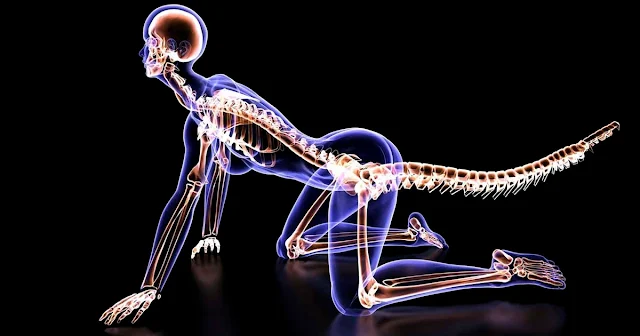One of the most remarkable changes in human evolution is the loss of our tails, a transformation that occurred around 25 million years ago. This pivotal shift not only altered the trajectory of our species but also marked a significant moment in the evolutionary history of primates. While scientists have long speculated on why humans lost their tails, the genetic cause has remained elusive—until now. A recent study published in Nature has finally uncovered the genetic factors responsible for this evolutionary change.

The Quest to Understand Tail Loss
The journey to unravel the mystery of human tail loss began in an unexpected way. Bo Xia, a graduate student at New York University, was inspired to investigate the origins of the human tailbone after injuring his own coccyx. This personal curiosity led Xia and his team to embark on a groundbreaking scientific investigation.
Through careful research, the team focused on the TBXT gene, which plays a crucial role in regulating tail length in various species. Their research revealed a unique genetic mutation within this gene, providing a major breakthrough in understanding human evolution.
The Role of Jumping Genes
A key aspect of this discovery lies in the role of Alu elements, often called “jumping genes.” These genetic elements, specific to primates, can move within the genome and cause significant changes. The researchers found that Alu elements inserted themselves into the TBXT gene, triggering a chain reaction that led to the loss of our tails.
This insertion activated a process known as alternative splicing, where RNA molecules are cut and restructured, which ultimately led to the deletion of a crucial exon. This change altered the structure and function of the resulting protein, leading to the tail loss seen in humans.
Validation Through Mice Studies
To confirm their findings, the researchers engineered laboratory mice with the same genetic mutations found in humans and apes. These genetically altered mice lost their tails, providing compelling evidence that the identified mutation plays a crucial role in the absence of tails in humans and other primates.
However, the study also uncovered a downside to tail loss: an increased risk of neural tube defects, such as spina bifida. This finding highlights the complex balance between evolutionary benefits and potential genetic trade-offs.
The Broader Implications
This discovery has profound implications not just for understanding human evolution, but also for human anatomy and health. The loss of our tails was not a random event but a genetic adaptation with lasting consequences. It illustrates the complex relationship between genetic changes and the way they shape our physiology over time.
As we continue to study our evolutionary past, these findings remind us of the intricate process of natural selection and genetic innovation that has shaped humanity. This breakthrough also underscores the power of scientific inquiry in uncovering the mysteries of our origins, offering insight into the past that can help us understand our future.
The identification of the genetic reasons behind tail loss is a testament to the persistence of scientific exploration and the ongoing quest for knowledge about our evolutionary journey.
Evidence of Jennifer Lopez and Ben Affleck Splitting Up Comes to Light

In 2022, Jennifer Lopez and Ben Affleck exchanged vows in a hurried Las Vegas ceremony. Unsettling rumors are circulating now that the pair may be getting a divorce. In order to comprehend what is going on, let’s get into the specifics.
Some reports claim that Ben Affleck has been living apart from his wife, Jennifer Lopez, at a different house. Reporters claimed to have seen him leave this house by himself several times.
In particular, the actor was spotted coming and going from a house in Brentwood, Los Angeles, that he seemed to be living alone. Affleck has reportedly been staying the night here, according to sources.
InTouch revealed earlier this week that Lopez and Affleck might be splitting up. According to the publication, Affleck had left their Beverly Hills marital residence. Although Affleck’s formal move out date is still unknown, it appears that he has been residing at his Brentwood house for a minimum of one week.

It’s interesting to note that over this time, Lopez and Affleck have both remained ring wearers. Despite their previous solo sightings at various events, Ben was conspicuously absent from Lopez’s side at the Met Gala last week.
His absence was attributed to “The Accountant 2” filming schedule conflicts with the event. However, the night before the Met Gala, Affleck was spotted in Los Angeles at Tom Brady’s roast. Additionally, Lopez has been spotted by paparazzi exploring Los Angeles without her spouse.
Lopez and her longtime producing partner were recently spotted house searching. At first, people thought she was looking for a new place to live with Affleck. There are now rumors circulating that she may be searching for a place to live alone.

The pair was last seen together in a photo in New York City back in March. They haven’t made any joint public appearances since then.
In terms of Affleck, he has been residing in Brentwood, the same community as his ex-wife Jennifer Garner and their three kids. According to reports, Affleck has been going to his kids’ events, which could account for his decision to stay in Brentwood and continue to be his children’s father.
Regarding these reports, neither Jennifer Lopez nor Ben Affleck have released an official remark as of yet.



Leave a Reply